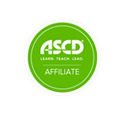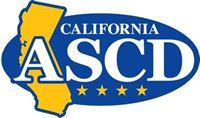EdSource
K-12 Education
Expect more phonics lessons in California schools under law Newsom signed
 by Carolyn JonesOctober 20, 2025
by Carolyn JonesOctober 20, 2025
Students in class at Lake Marie Elementary School in Whittier, on Nov. 17, 2022. Photo by Lauren Justice for Cal Matters
In summary
The law comes on the heels of a host of other literacy initiatives, including mandatory dyslexia screening and universal transitional kindergarten.
Welcome to CalMatters, the only nonprofit newsroom devoted solely to covering issues that affect all Californians. Sign up for WhatMatters to receive the latest news and commentary on the most important issues in the Golden State.
California took a big step toward overhauling its reading curriculum last week when Gov. Gavin Newsom signed a bill pushing for phonics-based instruction in elementary and middle school classrooms.
The new law provides training for school principals and reading specialists in the “science of reading,” a method of literacy instruction focused on vocabulary, comprehension and sounding words out rather than learning words by sight. The approach has led to improved reading scores in Mississippi, Louisiana and districts like Los Angeles Unified, which adopted it several years ago.
READ NEXT
April 30, 2025
The law also updates the state’s list of textbooks, flash cards and other classroom reading materials to align with a phonics-based approach.
The law comes on the heels of a host of other literacy initiatives, including mandatory dyslexia screening and universal transitional kindergarten. Combined, the efforts will dramatically reshape the way children in California learn to read and hopefully lead to higher test scores, experts said.
“California has one of the best literacy policy frameworks in the country right now,” said Marshall Tuck, chief executive of the advocacy group EdVoice and a former candidate for state superintendent of public instruction. “We worked very hard on this and we’re thrilled to get to this point. Now we just have to see it through.”
After years of controversy, little opposition
The new law passed the Legislature unanimously and had little opposition. That’s in stark contrast to previous efforts to bring phonics to classrooms, which met steep resistance from English learner advocates and the state’s largest teachers union. English learner groups said that a phonics-based approach only works for children who are fluent in English; the California Teachers Association said teachers need flexibility to pick a reading program that works for their students.
But those groups threw their support behind the current bill after a few changes: Reading materials will be available in languages other than English, and using phonics-based instruction will be optional, not mandatory. Although the state is pushing all schools to adopt the new approach, some may choose to stay with their existing curriculum, which is permissible under the state’s school governance system that leaves most decisions up to local school boards.
- Just the right amount of news
- Just the right amount of news
- Get California’s most essential headlines without feeling overwhelmed.
- Get California’s most essential headlines without feeling overwhelmed.
Email address
By clicking subscribe, you agree to the terms.
“What does this all mean? It means we’ll see,” said Todd Collins, an organizer of the California Reading Coalition and former Palo Alto Unified school board member. “But I’m hopeful. I think most school districts will get the message that they need to improve early literacy.”
Scores inching up
Collins’ group surveyed 300 California school districts in 2022 and found that 80% were not using a phonics-based approach to reading instruction. That’s changing, with some of the state’s largest districts adopting science-of-reading strategies and seeing good results. Los Angeles Unified, for example, saw its English language arts test scores jump 5.5 percentage points since it adopted a phonics-based curriculum in 2022. San Francisco Unified, Fresno Unified and Long Beach Unified have also seen improvements.
California’s reading scores are about the same as the national average, according to the latest Nation’s Report Card scores, and have been inching up since the pandemic. Last year, 49% of students met or exceeded the state’s English language arts standards — still below pre-pandemic levels but a big increase from the previous year.
Helping teachers
Among those who’ve pushed for the switch to phonics is Assemblywoman Blanca Rubio, a Democrat from West Covina who co-authored the bill. A former elementary teacher, Rubio hopes the new law will help classroom teachers as much as students and their families.
“It’s hard for teachers to see their kids feel defeated and frustrated,” Rubio said. “Now they’ll be equipped to really help their students succeed.”
She was inspired to author the bill, she said, in part because of her younger brother’s experience in school. He was wrongly placed in special education and never properly learned to read, she said, leading him to disengage from school and drop out in ninth grade. Countless other students have had the same experience, she said.
“I know how much it means to learn to read. It can shape someone’s whole life,” Rubio said. “That’s why we stuck with this.”
Another boost to reading instruction came in June, when Newsom included $200 million in the state budget to train teachers in the science of reading. The money should be enough to train every K-3 teacher in the state, Collins said. Credential programs are already training future teachers in the approach.
Tuck, of EdVoice, said the next step is ensuring the policy rolls out smoothly in schools. The new curriculum is a major shift for most schools, and teachers will need plenty of support.
“We can celebrate today, but tomorrow it’s back to work,” he said.











